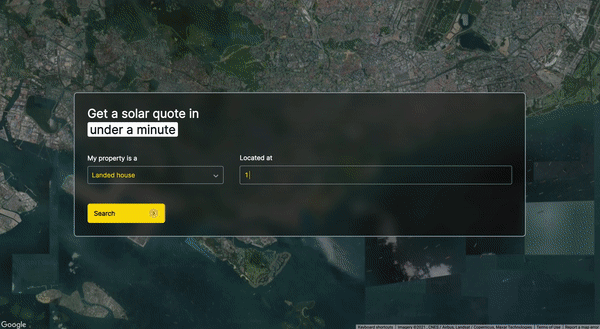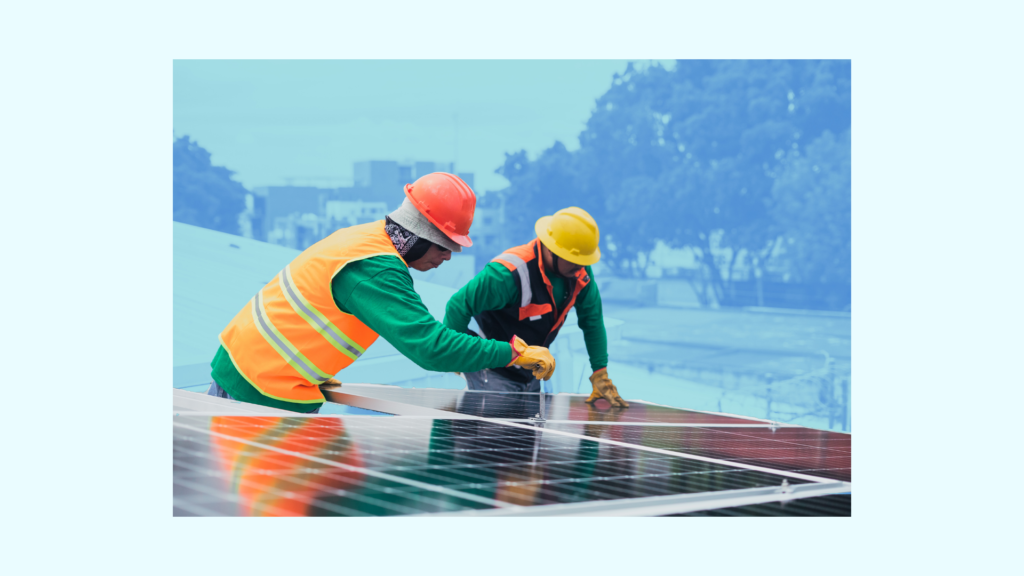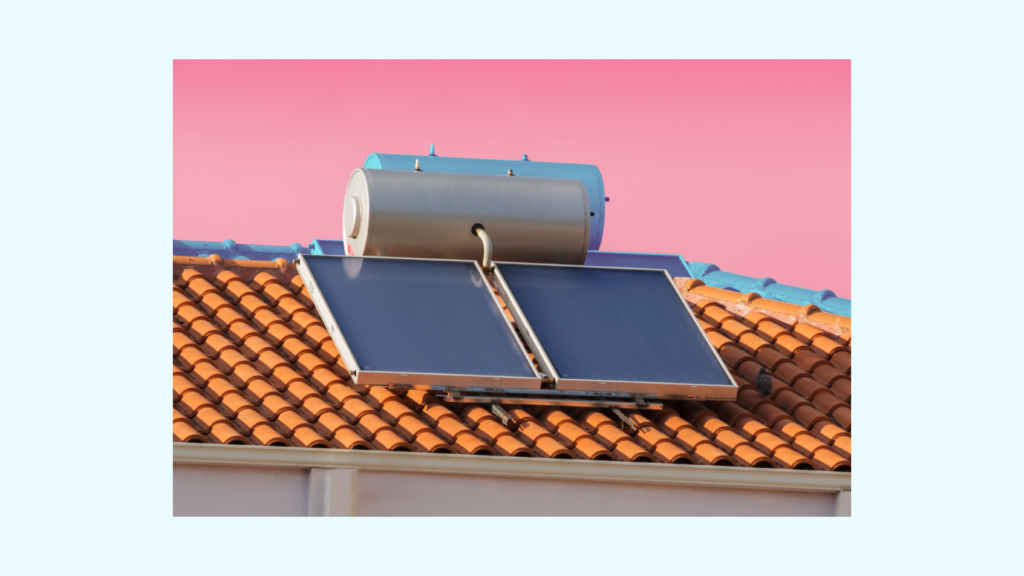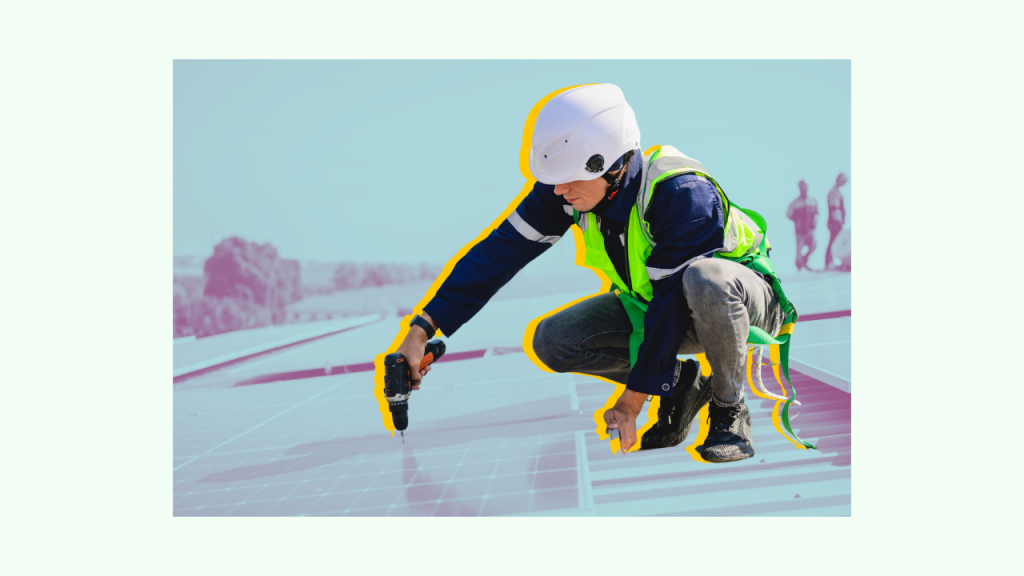Are you interested in installing solar panels on your roof but are unfamiliar or worried about the solar panel installation process? This article will aim to shed some light on the installation process and clarify your doubts. Let’s get into it!
The solar panel installation process is comprised of 10 main steps:
- 1. Site Preparation
- 2. Roof Inspection
- 3. Mounting and Racking
- 4. Solar Panel Installation
- 5. Wiring and Inverter Installation
- 6. Electrical Wiring and Connections
- 7. Final Inspection and Testing
- 8. Permit and Utility Interconnection
- 9. Cleanup
- 10. Orientation and System Handover
- Closing Thoughts
- Get an Instant Solar Estimate for your Home Now!
1. Site Preparation
On the day of the scheduled installation, a team of installers will arrive at your property with tools, equipment and solar panels. As soon as they arrive, they conduct a detailed site assessment to confirm the installation plan and handle any pressing issues. To maintain a safe working environment, they will set up barricades and warning signs. This ensures that the work area is secure and everyone is aware of potential hazards.
2. Roof Inspection
The installation team will start by inspecting your roof’s structural strength. This step is crucial in assessing if your roof can bear the weight of the solar panels. If any repairs or reinforcements are needed for your roof, they are carried out before proceeding. In situations where the roof is not easily accessible, such as being more than two stories high or cannot be accessed by an attic balcony, scaffolding may be required.
3. Mounting and Racking
Once the green light is given, the installation team proceeds to mount the racking system onto your roof. The racking system provides a sturdy framework for securing the solar panels in place. The installers ensure that the racking system is securely anchored to your roof, taking precautions to prevent any potential leaks or damage. The way that mounting frames are attached to your roof would depend on your roof type.
Tile Roofs
For traditional tile roofs, the tiles are temporarily removed while the mounting frame is affixed to the roof. Subsequently, the roof tiles are reinstated to their original positions.
Metal Roofs
For metal roofs, they are usually clamped directly onto the seams of your roof, without any penetration.
In certain cases, depending on your roof’s condition, your solar installer might also recommend roof waterproofing to prevent roof leakages that might be unintentionally caused by attaching the mounting frame.
4. Solar Panel Installation
With the racking system in place, the solar panels are carefully installed on the framework. Each solar panel is securely fastened to the racking system to withstand various weather conditions and ensure long-term stability.

5. Wiring and Inverter Installation
Once the solar panels are securely in place, the installation team then connects them through a network of electrical wiring. This wiring is carefully routed from each panel to an inverter, typically located near your primary electrical panel or distribution board. The role of the inverter is to transform the direct current (DC) electricity generated by the solar panels into alternating current (AC) electricity, which is the standard form of electricity used in your home. Installers often suggest placing your inverter indoors. This choice facilitates a stable Wi-Fi connection for your inverter, vital for its operation. Furthermore, keeping the inverter indoors, in a cooler environment, can enhance its efficiency by 1% to 3% and prolong its lifespan. To find out more about inverters, check out our solar inverter guide.

6. Electrical Wiring and Connections
Once the inverter is in place, the team establishes the necessary electrical connections between the inverter and your home’s electrical system. This involves ensuring that the solar-generated electricity can seamlessly integrate with your existing power supply. A bidirectional meter may be installed to measure both the electricity consumed from the grid and the surplus electricity fed back into the grid (if net metering is available).
7. Final Inspection and Testing
Once all the components are in place and the electrical connections are secured, the installers will carry out a thorough inspection is carried out to ensure compliance with safety and quality standards, as well as proper functionality. Licensed electrical workers conduct electrical testing to confirm that the system is generating electricity as anticipated and that all electrical connections are fault-free.
8. Permit and Utility Interconnection
Following inspection and approval, necessary permits are submitted to SP PowerGrid. Upon approval from SP PowerGrid, the solar PV system begins generating electricity seamlessly, integrating into your existing electrical setup.
9. Cleanup
Once the installation is complete and your solar panel system is up and running, the team cleans up the work area, removing any debris or materials. They leave your property in the same condition it was in before the installation, ensuring that no mess or hazards remain.
10. Orientation and System Handover
Before leaving, the installation team ensures that you are well-informed about monitoring and maintaining your solar panel system. They guide you on accessing system data and, if applicable, leveraging incentives or rebates for solar energy production. They furnish comprehensive insights into the system’s operation, maintenance needs, and warranty specifics. You are encouraged to ask questions and receive hands-on instructions for monitoring your solar system effective
Closing Thoughts
In Singapore, adhering to various standards and regulations is a must when it comes to solar panel installation. Additionally, to sell excess solar energy back to the grid, you must register with SP Services. However, unless you’re considering a DIY solar installation (which we don’t recommend in Singapore), these concerns shouldn’t trouble you too much. Licensed, top-tier solar installers possess the expertise to handle your solar panel system installation efficiently. Moreover, they are well-versed in the essential safety standards and measures mandated for all solar installations in Singapore.
Get an Instant Solar Estimate for your Home Now!

Whether you’re ready to install solar panels on your rooftop, or just wondering how you can benefit from solar, use our instant solar assessment tool to get an estimate of the solar potential of your property and find out how much you can save. At GetSolar, we combine geospatial analysis of satellite imagery with big data and artificial intelligence to provide you with reliable and accurate solar information so that you can make a better solar choice!




